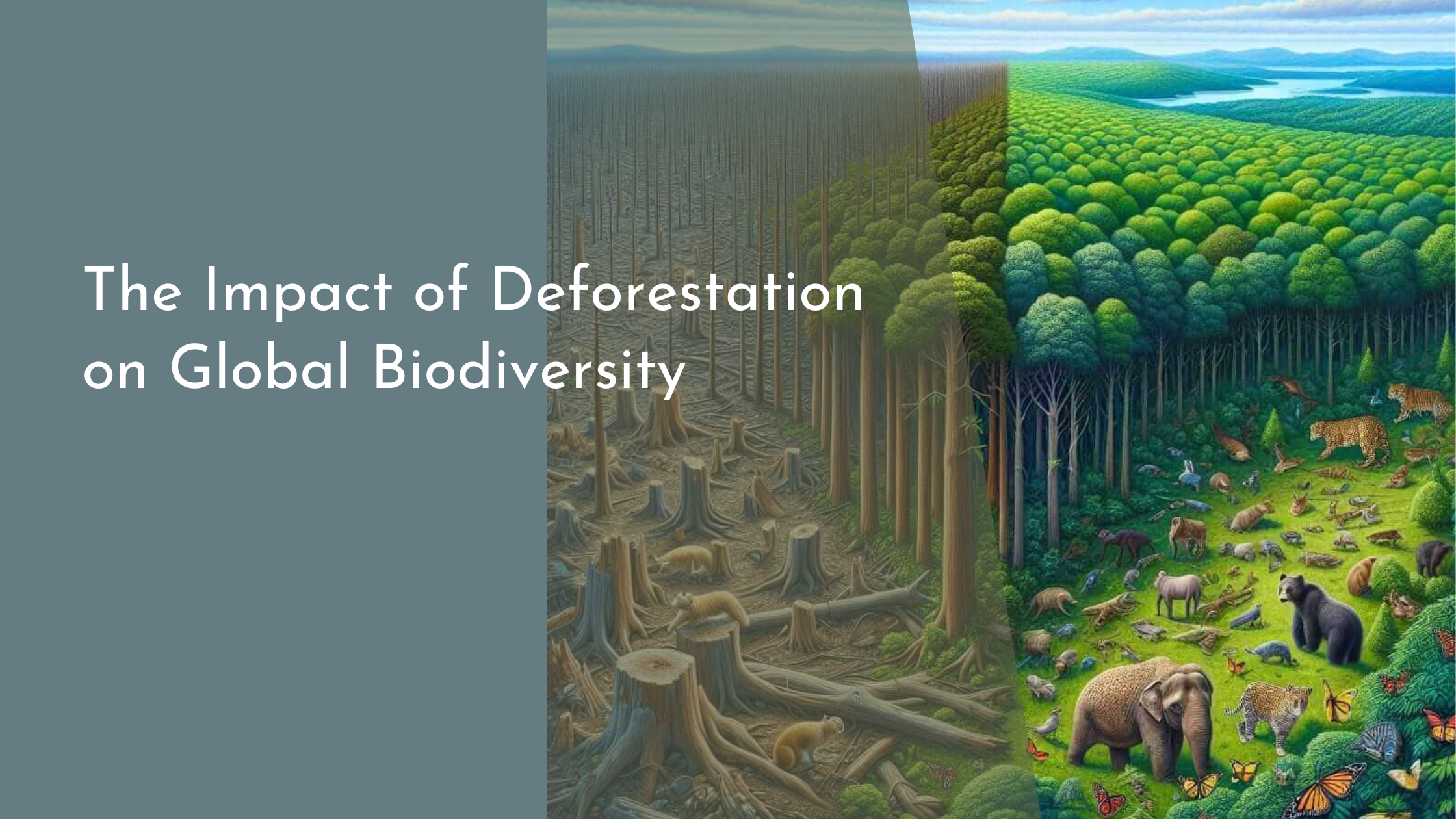The Impact of Deforestation on Global Biodiversity
Global biodiversity, the variety of life on Earth in all its forms and interactions, is facing an unprecedented crisis. Human activities, particularly deforestation, have been accelerating the pace of biodiversity loss, leading to dire consequences for ecosystems worldwide. However, amidst these challenges, there are ample opportunities to innovate and create solutions that can help restore and preserve our planet’s rich natural tapestry. Let’s explore how deforestation contributes to this crisis and look at the bright prospects for a greener future.
Understanding the Global Biodiversity Crisis
Biodiversity serves as the backbone of our planet’s ecosystems, providing essential services such as food, clean water, and air while maintaining ecological balance. Unfortunately, the world is experiencing a biodiversity crisis, with species disappearing at an alarming rate. Estimates suggest that we are losing species 1,000 to 10,000 times faster than the natural extinction rate, primarily driven by human activities. This loss not only impacts the environment but also threatens human health, livelihoods, and security.
The causes of this crisis are multifaceted, including habitat destruction, pollution, climate change, and overexploitation of species. Deforestation is a significant contributor, as it results in the loss of natural habitats for innumerable species. Forests harbor more than 80% of the world’s terrestrial biodiversity, and their destruction leads to the fragmentation of ecosystems, making it difficult for species to survive and thrive. Consequently, understanding and addressing deforestation is crucial to mitigating the broader biodiversity crisis.
Deforestation’s Role in Ecosystem Disruption
Forests play a pivotal role in maintaining ecological stability, supporting a wide range of plant and animal species, and regulating climate patterns. When deforestation occurs, it disrupts these intricate networks and leads to a cascade of environmental issues. Trees act as carbon sinks, absorbing carbon dioxide and mitigating the effects of climate change. Their removal releases stored carbon into the atmosphere, exacerbating global warming and altering local climate conditions.
Furthermore, deforestation leads to soil erosion, water cycle disruption, and the loss of vital ecosystem services. The removal of trees can cause a decline in soil fertility and increase the risk of floods and droughts. This disruption not only impacts the local environment but also has far-reaching effects on global ecosystems. As forests disappear, so do the homes of countless species, pushing them toward extinction and reducing the overall resilience of ecosystems.
The Ripple Effects on Endangered Species
Deforestation poses a severe threat to many endangered species that depend on forest habitats for their survival. When trees are cut down, these species lose their homes and food sources, leading to population declines and increased vulnerability to extinction. Iconic species like orangutans, tigers, and elephants are among those most affected by deforestation, as their habitats are rapidly shrinking due to logging, agriculture, and urban development.
Moreover, deforestation often results in habitat fragmentation, creating isolated patches of forests that are too small to sustain viable populations of certain species. This fragmentation disrupts migration patterns, breeding, and access to resources, further endangering species. The loss of biodiversity also weakens ecosystems, reducing their ability to adapt to environmental changes and threatening the survival of other interconnected species.
Innovating Solutions for a Greener Tomorrow
Despite the challenges posed by deforestation, innovative solutions are emerging to tackle the biodiversity crisis and promote sustainable practices. Reforestation and afforestation projects are gaining momentum, restoring degraded lands and creating new habitats for wildlife. These initiatives not only help sequester carbon but also provide economic opportunities for local communities through eco-tourism and sustainable forestry practices.
Technological advancements are also playing a crucial role in combating deforestation. Remote sensing, satellite monitoring, and AI-driven analytics are enhancing our ability to track forest loss and assess the health of ecosystems. These tools enable more informed decision-making and foster international cooperation in protecting biodiversity. By embracing innovative solutions and fostering a collaborative spirit, we can pave the way for a greener, more sustainable future.
While deforestation remains a significant challenge to global biodiversity, it is heartening to see the growing commitment from individuals, communities, and nations to address this issue. By prioritizing sustainable practices and leveraging technological advancements, we can mitigate the impacts of deforestation and preserve our planet’s rich biodiversity. Together, we can ensure that future generations inherit a world teeming with life and ecological harmony, where nature and humanity thrive side by side.

